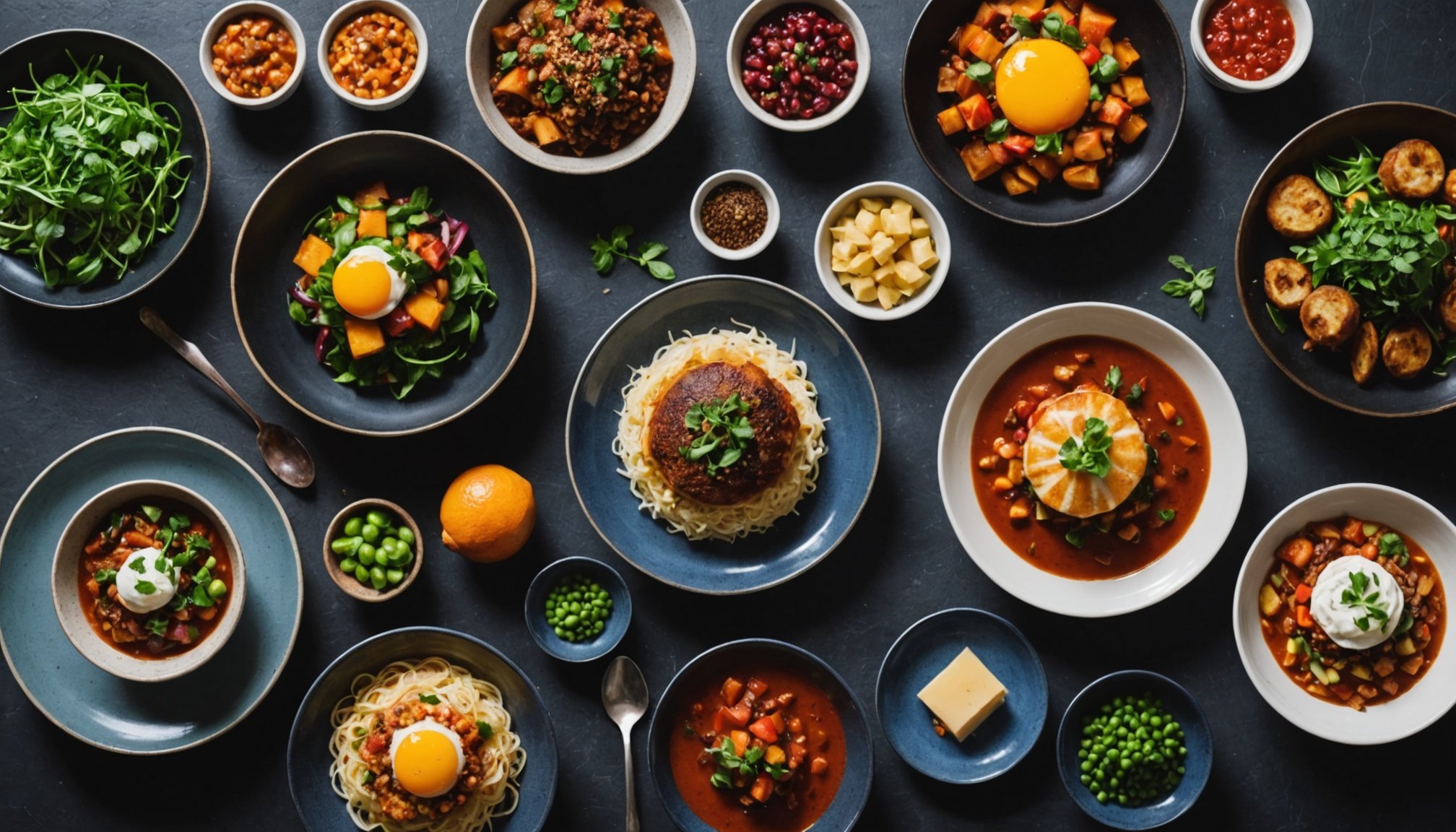Leading International Kitchen Innovations and Their Impact
Global kitchen innovations are reshaping how people cook, organize, and interact with their kitchens worldwide. Among the most prominent international kitchen trends is the integration of kitchen design technology that leverages automation, connectivity, and advanced materials to enhance usability. For example, in South Korea, touchless sinks with built-in water filtration optimize hygiene and conserve resources simultaneously. This innovation improves safety by minimizing contact while fostering sustainability through reduced water waste.
In Europe, the use of sustainable materials such as recycled glass countertops and low-emission paints is gaining momentum, reflecting a focus on eco-conscious design. These materials not only reduce environmental impact but also contribute to healthier indoor air quality. Coupled with smart lighting systems that adjust to natural daylight, these innovations underscore how global kitchen innovations prioritize both wellbeing and efficiency.
Topic to read : What are the new trends in UK kitchen flooring?
Efficiency is further boosted by smart cooking appliances that use AI to adapt cooking times and temperatures automatically. Countries like the United States lead in this domain, where ovens with self-learning functions significantly reduce energy consumption and improve cooking precision. Moreover, international kitchen trends highlight the rise of modular and flexible layouts that accommodate varied cooking styles and family sizes. This adaptability is seen in designs from Australia, where open-plan kitchens seamlessly integrate with living spaces, promoting both social interaction and functional convenience.
In summary, the impact of these innovations spans safety, sustainability, and efficiency—hallmarks of modern kitchens globally. Embracing cutting-edge kitchen design technology and thoughtful material selection allows homes worldwide to enjoy smarter, healthier, and more eco-friendly culinary environments.
In the same genre : How Is Technology Transforming the Way We Experience Food in UK Kitchens?
Comparing Global Practices with UK Kitchens
The UK kitchen practices often lag behind some international counterparts, particularly in adopting advanced smart kitchen technology and sustainable materials. Compared to global kitchen comparison standards, UK kitchens generally show slower integration of automation and IoT features, such as smart appliances with AI-enabled functions that enhance efficiency and conserve energy. For example, while many Asian and European kitchens utilize voice-controlled devices and automatic cooking modes, UK homes largely rely on traditional appliances, signaling a clear technology adoption gap.
Layout and design represent another area for kitchen improvement opportunities. Globally, ergonomic and space-saving designs—common in dense urban settings like Tokyo or Scandinavian modular setups—optimize user movement and comfort. UK kitchens, however, frequently retain conventional layouts with less focus on adaptable configurations or maximizing small spaces efficiently. This difference points to a potential redesign approach that better aligns with contemporary global trends promoting workflow and ergonomic benefits.
Cultural and regulatory influences also weigh heavily on how UK kitchens evolve. Unlike Germany or Japan, where stringent energy efficiency regulations and sustainability mandates drive kitchen innovation, the UK’s regulatory framework is comparatively less prescriptive. This results in slower widespread adoption of eco-friendly practices despite growing public interest. Moreover, cultural preferences for traditional kitchen aesthetics often temper rapid technological changes, contrasting with the more experimental designs embraced globally.
Addressing these gaps by fostering innovation, updating regulations, and encouraging flexible design could help UK kitchens catch up with global kitchen comparison benchmarks, enhancing both environmental impact and daily usability.
Insights from Commercial Kitchens Worldwide
Global commercial kitchen innovations reveal how international restaurants and hotel kitchens elevate efficiency and safety through advanced technology and workflow optimization. In many leading establishments, integration of automated cooking equipment and smart inventory systems enables precise control over food quality and resource management.
For example, professional kitchens in Michelin-starred venues often use sensor-driven cooking stations that regulate temperature and timing automatically, ensuring consistency while freeing staff to focus on creative tasks. These professional kitchen trends prioritize not only productivity but also rigorous food safety protocols, employing real-time monitoring to prevent contamination and reduce waste.
Workflow enhancements include streamlined station layouts and modular work surfaces that adapt to varying menu demands during peak hours. In Asian urban centers, kitchens have adopted robotic assistants for repetitive preparation tasks, cutting labor costs and speeding service without sacrificing quality. These insights demonstrate scalable solutions that UK commercial kitchens can adapt to boost their competitiveness in a demanding market.
By embracing these restaurant kitchen upgrades, UK establishments can optimize staff allocation, reduce errors, and meet regulatory standards more efficiently. This approach aligns with the global movement towards smarter, safer, and more productive culinary environments.
Modern Domestic Kitchen Innovations: Inspiration for UK Homes
Innovations in domestic kitchen design are evolving rapidly, driven by advances in technology and changing lifestyles. Global trends emphasize the rise of smart home kitchens, where interconnected appliances communicate to optimize cooking, cleaning, and inventory management. Integrating smart ovens, voice-activated assistants, and app-controlled refrigerators allows UK homeowners to streamline meal preparation and minimize waste.
Flexible kitchen spaces are gaining traction worldwide, accommodating multifunctional use by combining cooking, dining, and social areas. These adaptable layouts support varied household needs while maximizing space efficiency, a vital consideration for many UK properties. Incorporating modular cabinetry and mobile kitchen islands into UK homes can enhance both form and function.
Eco-friendly domestic kitchen innovations remain paramount. Low-energy appliances, water-saving fixtures, and sustainable materials reduce environmental impact and operating costs. UK homeowners adopting these designs experience long-term benefits while contributing positively to climate goals.
In practice, UK kitchen remodels increasingly reflect these global influences. For example, integrating smart induction hobs with automated cooking modes allows precise control and energy efficiency. Adding flexible seating zones paired with sustainable countertops made from recycled materials showcases a commitment to modern, conscious living. These examples illustrate how embracing future kitchen design trends can transform UK homes into smart, sustainable, and versatile spaces.
Overcoming Barriers: Adapting Global Solutions in the UK Context
Adapting kitchen innovation from global markets to the UK faces several challenges, notably due to differences in space constraints, strict regulatory standards, and unique consumer habits. The UK’s typically smaller kitchen sizes compared to international counterparts necessitate creative adaptation of technologies primarily designed for larger spaces, such as multi-functional appliances or vertical storage units. This demands a focus on compact design without sacrificing functionality.
Regulatory compliance in the UK poses another significant challenge. Innovations must meet British safety and energy efficiency standards, which sometimes differ sharply from international norms. For example, electrical appliances and IoT-connected devices need certification under UK regulations, requiring modifications to their hardware or software. This regulatory fit ensures consumer safety and promotes trust but can delay or complicate implementation.
Cultural preferences also play a crucial role. UK consumers often value simplicity and reliability in kitchen technology, showing cautious adoption of complex automation. To address this, suppliers tailor smart kitchen features to enhance usability and provide clear benefits, such as water-saving faucets or energy-monitoring refrigerators, aligning innovation with local habits.
Experts emphasize that successful integration hinges on collaboration between manufacturers, regulators, and consumers. Understanding the local context allows for the customization of global innovations to fit UK kitchens better. However, potential pitfalls include overcomplicating devices that become difficult to maintain or ignoring space limitations, which can reduce user acceptance.
In essence, navigating these barriers requires a balanced approach: embracing international kitchen innovations while respecting UK-specific constraints to create practical, effective solutions.
Actionable Steps for Kitchen Stakeholders in the UK
When considering a kitchen improvement roadmap, UK kitchen stakeholders—including designers, architects, and kitchen owners—can benefit greatly from global advancements. The first step involves thoroughly evaluating current kitchen setups to identify opportunities for efficiency and sustainability improvements. This means assessing workflows, appliance integration, and material use in light of international best practices.
Adopting innovations should be systematic. Start by prioritizing technologies that have proven success globally, such as smart appliances that reduce energy consumption or modular layouts enhancing spatial efficiency. Introducing these in phases can help manage costs and allow for user adaptation. It is crucial to maintain clear communication among all participants to ensure alignment on goals and expectations.
Collaboration is key. Designers and architects can partner with technology providers to stay informed about emerging tools and trends. Offering ongoing training enhances the ability to implement and maintain innovations effectively. Additionally, combining resources, such as shared knowledge hubs or local workshops, supports smoother adoption of new methods and products.
By following a clear kitchen improvement roadmap and fostering collaboration along with continuous learning, UK kitchen stakeholders can confidently implement modern solutions that improve function, sustainability, and user experience.




